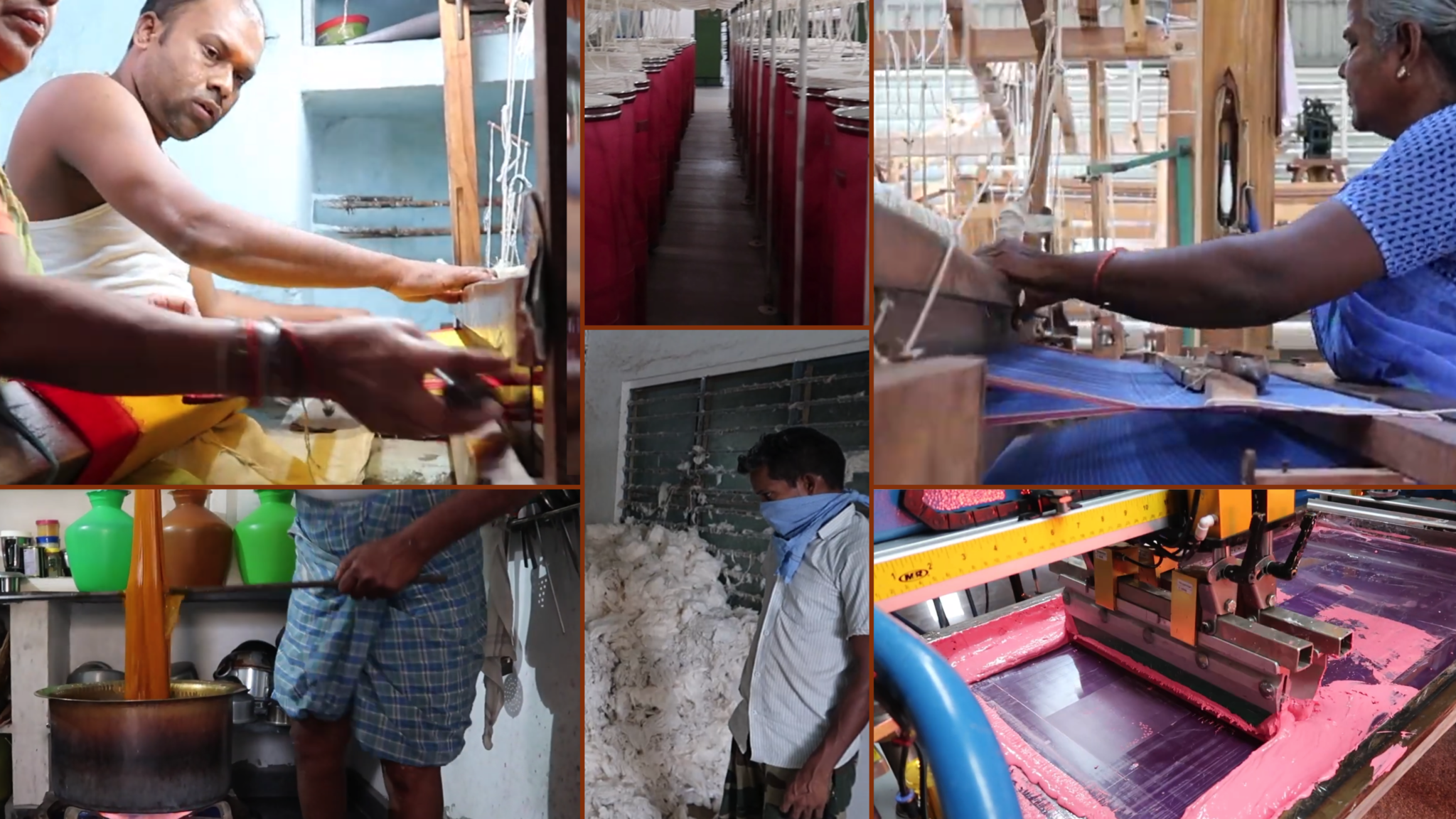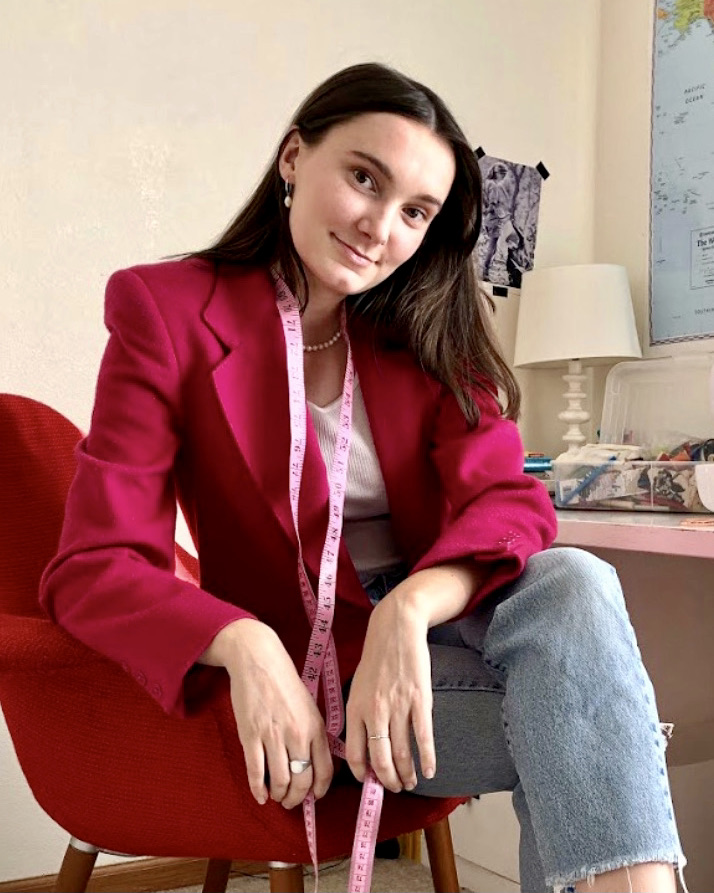
Scenes from ESS alumna Sara Van Hatten’s recap video from August 2019 trip to India.
Colorado State University’s Sonali Diddi has dedicated her career to researching the social and environmental impacts of the fashion industry – helping companies, students and consumers understand and confront business policies and practices causing damage to Earth’s ecosystems and the communities they support.
Diddi, an associate professor of Department of Design and Merchandising in the College of Health and Human Sciences, is currently conducting an interdisciplinary study to better understand the fashion industry’s carbon footprint. Ultimately, she hopes to develop a tool to help businesses shrink their carbon footprint through innovative techniques and practices to improve sustainability throughout the product lifecycle, from production to disposal.
“We want people to think of clothes as a commodity, which they use like food, water and electricity,” Diddi said.
The two-year study, which started in July 2020, is supported by a grant from CSU’s School of Global Environmental Sustainability. Diddi’s hand-picked team of researchers from across the university includes Professor Rich Conant from the Warner College of Natural Resources, Assistant Professor Zac Rogers and Associate Professor Lumina Albert from the College of Business, and Assistant Professor Anders Fremstad from the College of Liberal Arts.
The study will rely on the interdisciplinary team’s extensive expertise in tracking the social and environmental impacts of fashion and other industries, biogeochemistry and material flows, carbon accounting, business ethics, logistics, e-commerce and environmental economics, among other areas.

Clockwise from top-left: Sonali Diddi, Rich Conant, Anders Fremstad, Zac Rogers, Lumina Albert
Threading the needle
The study’s first phase involves surveying fashion companies to assess the environmental impacts of alternative business models such as those being piloted by Rent the Runway – a subscription-based clothing rental and reuse platform that markets itself as an eco-friendly option for consumers to cycle through styles without ever buying, cleaning, or disposing of their own clothes.
The team will explore and assess how even platforms like these, which may at first appear more sustainable, often come with high environmental costs. Rent the Runway’s model, for example, involves laundering or dry-cleaning, packaging, transporting and maintaining a constantly circulating wardrobe for roughly 6 million U.S. customers.
The study will investigate and quantify the external impacts of various alternative business models to more accurately determine which ones are the least harmful to people and the planet while also economically viable for companies to consider adopting.
“We are looking forward to getting some hard numbers about how sustainable these alternative business models are,” Diddi said. “And if they’re not, then that’s a way for the industry to rethink how to be more sustainable and address these different challenges.”
If all goes according to plan, Diddi and her team will use the study’s findings to produce a tool for industry decisionmakers to navigate the complicated arena of carbon accounting and greenhouse gas emissions reporting.
Mending the future
![Design and Merchandising associate professor Sonali Diddi (third from right) joins students in hosting a Mending Café community clothing repair event in Fort Collins, April 21, 2018.]](https://chhs.source.colostate.edu/wp-content/uploads/sites/4/2021/03/Mending-Cafe.png)
Design and Merchandising Associate Professor Sonali Diddi (third from right) joins students in hosting a Mending Café community clothing repair event in Fort Collins, April 21, 2018.
According to the United Nations Alliance for Sustainable Fashion, the fashion industry produces 20% of the world’s industrial wastewater and more global carbon emissions than all international flights and maritime shipping combined. The equivalent of one garbage truckload of textiles is either landfilled or incinerated every second.
While tracking and accounting for the carbon footprint of clothing production, transportation, and waste can help companies make more sustainable decisions, finding the expertise required to do so can be challenging, especially for companies with limited resources.
“Accounting for clothing- or food-related emissions is much more comprehensive and more complicated than doing something for energy use or transportation,” said Conant, whose research focuses primarily on accounting and examining material flows of carbon, nitrogen, phosphorus and sulfur in soils.
Conant is excited at the possibility of developing a tool to inform the fashion industry on best practices to minimize its social and environmental impacts.
The tool will be designed primarily for industry use, at least initially, providing companies a definitive set of guidelines and carbon accounting formulas to reduce the industry’s collective carbon footprint. The team hopes the tool also will help consumers make more informed, environmentally responsible clothing purchases.
Diving deep
Sara Van Hatten, one of Diddi’s former mentees and research assistants, got a behind-the-scenes look at the fashion industry’s harmful impacts in 2019 as a student, traveling through southern India to better understand the country’s fashion and textile industries.
The experience allowed her to observe the entire supply chain and sparked a passion that included her serving as director of CSU’s Student Sustainability Center and earning a bachelor’s in Ecosystem Science and Sustainability in 2020.
“I became more and more interested in clothing production, and started to find out just how destructive it is to the people working in clothing production as well as the environments surrounding the industry,” Van Hatten said.

She first connected with Diddi after seeing a poster about her Clothing and Sustainability Research Group, which she joined and contributed to during the Spring 2017 semester.
“I started finding every way possible to work with Dr. Diddi,” said Van Hatten, whose Honors thesis focused on the feasibility of alternative business practices such as garment-to-garment and high-quality textile recycling for Arc Thrift Stores. “By the time I graduated, she was my biggest influence and mentor on campus.”
Closing the loop
As tomorrow’s workforce, students today will play a significant role in advancing the industry’s shift toward sustainability – either with companies already adopting sustainable practices or with those in dire need of supply chain managers, textile chemists and other experts who can help lead the way.
“We know large industry players are aware of the importance of sustainability initiatives across their supply chains,” said Van Hatten, acknowledging sustainability’s growing influence on the industry.
Recognizing the need for more companies to set realistic and attainable goals around carbon accounting and emissions reduction, Diddi, Conant and other faculty teamed up in 2019 to create an online Carbon Management graduate certificate program.
The certificate program, offered in a fully virtual format through CSU Online, helps students understand the science and mechanics of carbon footprint calculations, preparing them to become “better decision makers,” Diddi said.
“There’s a need for professionals who can help organizations of all kinds account for their greenhouse gas emissions and figure out how to reduce their emissions,” Conant added.
Earn a graduate certificate in carbon management online
Developed by CSU’s Department of Ecosystem Science and Sustainability, this graduate certificate will equip students with specialized knowledge to effectively analyze carbon production and manage or offset emission levels to aid government entities and corporations in becoming more sustainable.
• Format: Online
• Credits: 10-11
• Cost: $685 per credit (financial aid available)
• Application deadlines: July 15 (Fall); Dec. 1 (Spring)
Learn more and apply: col.st/MIzEQ
The Department of Design and Merchandising is part of CSU’s College of Health and Human Sciences.
Cristin Peratt, CSU Online, contributed to this story.